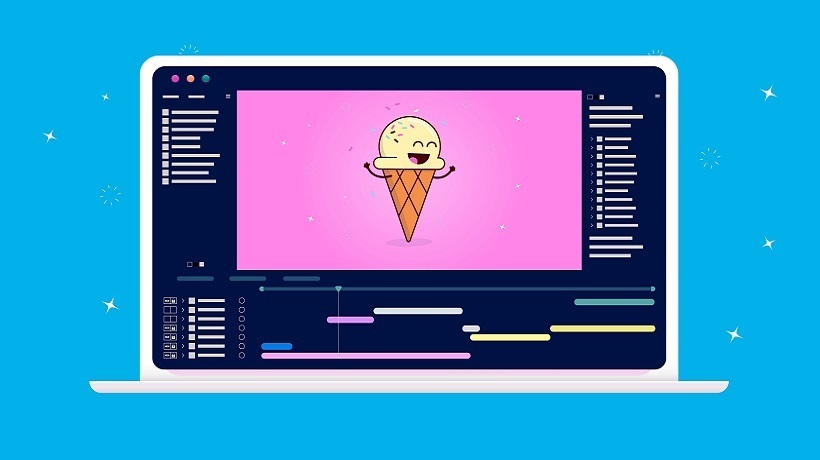Learn How To Create Effective Animated eLearning Videos
Animated educational videos are exactly what they say they are. Rather than letting the educator verbally explain, these videos capture the essence of the problem in 1 to 3 minutes through exciting animation. Its strength is compact—there’s a lot of information included in a short amount of time with very little use of text. Often, these clips combine visual aids with narration to make the information fast-paced and engaging.
There are two main types of animated educational videos: one includes characters and the other doesn’t. Basic as it seems, the different attributes of each type, rather than general video-making skills, greatly determine which element, amongst three, to focus on to create a good quality animated video. Hereunder are the details you will need to pay extra attention to, depending on which type of animation you are working on.
Criteria For Good Character-Based Educational Animated Videos
These kinds of educational animation videos have plots that feature a character. With the plot included, the obvious element that you have to keep an eye on is the script. Since character-based videos are all about the storytelling technique, the script should be able to convey a clear key takeaway message with a simple structure. Thus, during the script-writing process, make sure you:
1. Keep It Shorter Than 5 minutes
Remember, a human’s attention span is short. Videos longer than 5 minutes may be distracting or boring.
2. Skip Over Unnecessary Details
When writing stories, we often get carried away with background elements, like how old the characters are or what kind of day it was. Cut out details that don’t add directly to your story and lesson. For example, when the lesson is not about storms or droughts, don’t add details about the weather!
3. Build Interesting Characters
For this kind of video, the characters, whether they are animated humans or objects, are the main focus, spirit, and meaning of the video. We have some tips to help you when you’re creating them:
- If your characters are humans, make them relatable to your learners so they can better tell the story.
- On the other hand, you might want to use inanimate objects. Objects may be useful when it comes to explaining concepts. All you need to do is humanize them, give them some dialogue and action, or have them think.
4. Add Fun Features Like Dialogue And Humor
Whenever appropriate, let characters interact or tell their story. Active characters can be much more interesting than narrated ones. And if the video is not about serious matters like bullying, humor can always be used to spice things up.
Other than that, matters of character design, visual effects, and motion are of average importance. This does not mean that you can go ahead a draw stickmen, of course. All of these other elements should be of adequate quality, but they are not the main things attracting the audience to an animated educational explainer video. So, your designs and visual effects can be kept simple.
So, overall, for character-based videos, here are the things to keep in mind to make good animation:
- The script is the most important element.
- Focus on the essential information to keep the video short.
- The characters and their actions should be well-developed.
Consequently, this type of animation is probably best for the following purposes:
- When making how-to guides where characters can carry out the actions
- For imagining marketing or business scenarios
- To present social or behavioral problems and their solutions
What Makes Good Character-Free Educational Animation?
Educational animation without characters focuses on demonstrating events or actions and is especially useful for visualizing spoken explanations.
Since there are no characters or story to focus on, the most important factor of this kind of clip is the visuals—the design, motions, and effects. Here, you should aim for more than just crisp structures and smooth transition. To really attract your audience, pay attention to the following:
1. Create Mesmerizing Designs
They are the star of your video! If given the chance, be as creative as you can. For example, if you are portraying a timeline in your video, you may want to use more interesting designs than a mere line with segments branching out from it. Perhaps you can use the image of a tree vine to make your animation more interesting or show how one event can lead to another.
In some cases, it may be difficult to be out of the box with your designs. When describing processes based on real life, you don’t want to be too imaginative or it might distract learners. If so, you can stick to realistic images, but make them neatly designed and pick a nice color scheme.
2. Motion Is Crucial
Keep in mind that these are videos, not images. It’s easy to just put in images and transitions in between, yet that would defeat the purpose of using a clip. You might not pay close attention to the audiences' point of view, yet constantly moving objects in the background make a video true to life and keep your audiences' brains working as well. Remember, static images coupled with voice over are not different from staring at the board while the teacher lectures.
3. Boil Texts Down To Their Essence
Your audience watches good educational animation for its lively actions and attractive images, not for paragraphs of texts, so avoid that. Keep it simple but potent—don’t waste any words. However, when you do use text, make it fun to look at by picking nice fonts and using appropriate transitions for them.
Generally, if you are not having characters in your animated learning video, you will not have to focus too heavily on the script. Just make sure that it’s concise and contains everything you want to teach via animation. The real hard work goes into designing and editing the video.
So, in the case of creating good, non-character animated videos, you should remember these things:
- Your visual designs are the star of the clip.
- Skillful editing—motions and transitions—is very impactful.
- Texts should be efficiently used.
This animated video type is great for:
- Describing non-human phenomena, mostly in natural sciences or economics
- Tutorials for machine-based processes
- Retelling events, especially ones based on a timeline
Some processes are just better explained using animation, such as chemical processes. In these cases, what is more important than anything is clear design and movement.
Lessons Learned
There are a few aspects to focus on if you want to create an amazing educational animation video. For story-based plots using characters, writing a good script is the most important part of the production process. On the other hand, if you are not using characters, you need wonderful graphics and motions to keep your clip engaging. Having this guide on hand, it’s time to better your eLearning course with animated videos.









